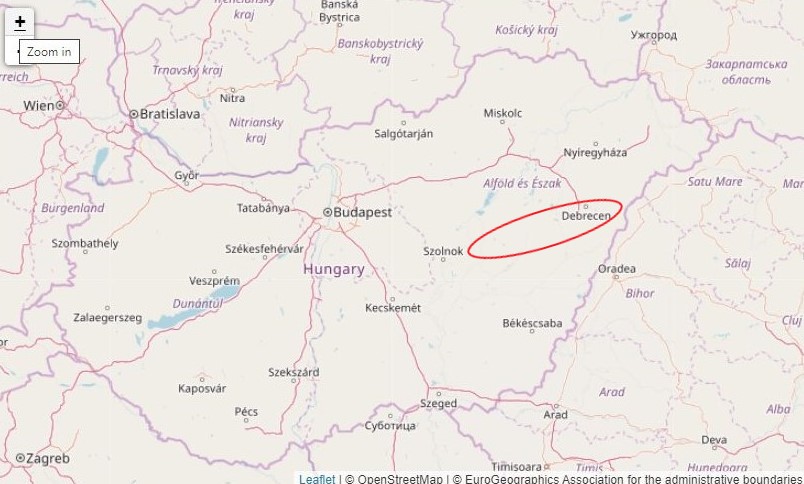This major project will modernise an 8.04 km section of railway line between the towns of Ebes and Debrecen in the Northern Great Plain region of Hungary. Simultaneously, the European Train Control System (ETCS) will be installed on 106.68 km of the Szajol-Debrecen line. Both elements are intended to contribute to economic development in the region and to improving this part of the TEN-T Mediterranean Corridor.
- 25 January 2022
On the Ebes-Debrecen section, three level crossings will be removed and a road overpass constructed. The track will be upgraded to carry heavier loads.
On the Szajol-Debrecen section, signalling and control infrastructure will be installed. The work will include reconstruction, demolition and installation of new overhead electric cables. This will enable trains to travel at speeds of up to 160 km/h instead of the current speed of 120 km/h.
Corridor bottleneck
The Ebes-Debrecen section is part of European Rail Freight Corridor 6 (RFC6), which connects Algeciras in southern Spain to Záhony in north-eastern Hungary, and part of the TEN-T core network. It forms a vital rail link between northern Italy, Slovenia and Croatia in the west, and the Ukraine and south-eastern Slovakia in the east.
At present, the section fails to meet technical specifications for interoperability. Trains on this part of the line cannot travel as fast, nor carry as much cargo, as they can on the reconstructed Szolnok-Szajol-Püspökladány section before Debrecen and which allows speeds of up to 160km/h.
The line cannot satisfy current and projected future demand for passenger and freight transport. This, along with high operating and maintenance costs, makes it a bottleneck on the European TEN-T core network.
Socio-economic development
The project will contribute to the socio-economic development of the region and to better links between the region and Budapest.
Better infrastructure should attract companies, such as logistics operators, and improve the flow of goods between Eastern and Western Europe. The investment in this relatively underdeveloped part of Hungary will help to create jobs, improve living standards and prevent migration of skilled workers.
A faster, more efficient train service will also encourage people to use public transport, which will reduce air and noise pollution from road traffic. At the same time, ensuring that the line meets interoperability requirements should improve the safety of railway transport, speed of travel, and service to towns along the route.
Holistic development
The current project follows two other major projects to modernise this railway corridor. The first, the reconstruction of the Szajol-Püspökladány section, was completed in 2015. The Commission approved the next project, the modernisation of the Püspökladány-Ebes section, in April 2018 and it is being implemented.
Total investment and EU funding
Total investment for the project “Development of the Szajol – Debrecen railway line section: Modernisation of the Ebes (excl.) - Debrecen (excl.) line section and installation of ETCS on the Szajol-Debrecen line section” is EUR 119 597 082, with the EU’s Cohesion Fund contributing EUR 80 104 225 through the “Integrated Transport” Operational Programme for the 2014-2020 programming period. The investment falls under the priority “Improvement of International (TEN-T) Railway and Waterway Accessibility”.

